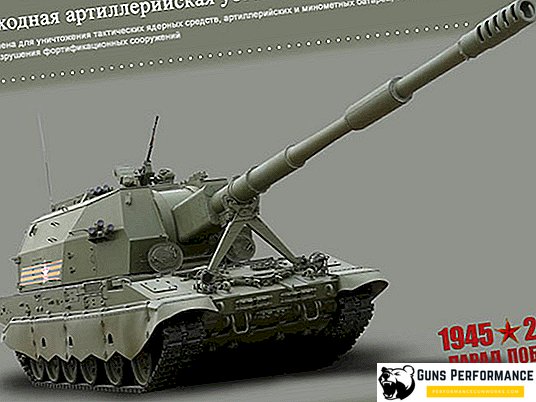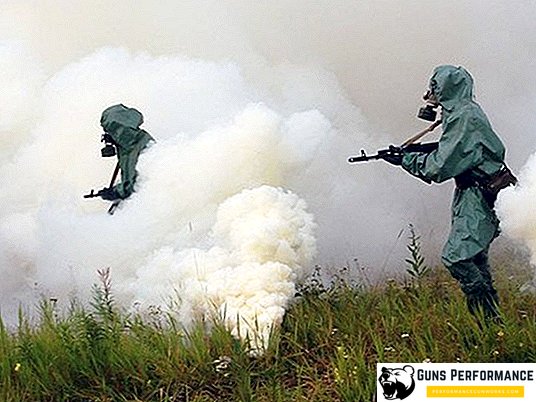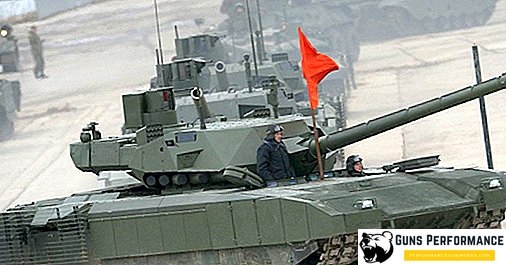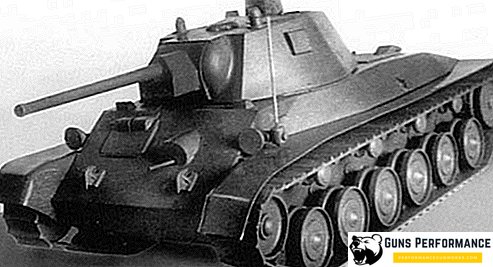War in all ages and times served as the engine of technical progress. This tendency was especially clearly manifested in the twentieth century, and this is not surprising. The military conflicts of the past century can be called "the war of engines" and the victories in these conflicts took place not only in the combat zone, but also in the design offices and in the factory workshops.

This is particularly true for the air force. The most fierce rivalry between Soviet and Western aircraft manufacturers is typical for the period of the Cold War, this turbulent time was a real heyday for Soviet aviation and aircraft industry. For several dozens of post-war years in the USSR, dozens of beautiful cars, which have no world analogues, were designed and put into the series. Particularly great were the successes of Soviet aircraft manufacturers in the field of transport aviation.
The history of the creation of the An-22 "Antey"
One of the leading centers for the creation of transport aircraft in the USSR has traditionally been considered Antonov Design Bureau. At the end of the 1950s, Antonov Design Bureau began developing a heavy transport aircraft capable of delivering not only personnel but also military equipment, including tanks, to the battlefield. However, the main task of the new aircraft was the delivery of intercontinental ballistic missiles and launch equipment. The idea was as follows: the plane should deliver missiles to the airfield closest to the launch shaft, and the missile should have been delivered directly to the site by helicopter.

At this time in the Soviet Union, a magnificent NK-12 turboprop engine was developed for strategic bombers; it was his developers who used the new transport aircraft. In 1960, the Council of Ministers issued a decree on the beginning of the creation of a new car. The requirements for it were very tough: the plane had to have a loading capacity of at least 50 tons, use non-equipped platforms for takeoff and landing, and carry a wide range of cargoes, including large and oversized cargo.

By 1961, the layout of the future aircraft was ready, and the first two cars were built in 1964. February 27, 1965 began testing the An-22. The works were difficult, the An-22 was the first Soviet wide-bodied aircraft, so many technical problems had to be solved for the first time. The first production aircraft was ready in 1966, and in 1969 it was adopted by the military transport aviation of the USSR. With the installation of this aircraft into service, the Soviet armed forces became truly mobile: the An-22 Antey could transport practically any kind of equipment of the Ground Forces, including tanks and even tactical missile systems. Moreover, the An-22 transport aircraft also solved strategic tasks: its design made it possible to take on board almost the entire range of cargoes for strategic missile forces.

Immediately after the end of the tests, in 1969, the An-22 performed several record-breaking international flights (in order to prove Soviet technical superiority): in Hanoi and Lima (Peru). Shortly before, a destructive earthquake occurred in Peru, and the USSR government sent humanitarian aid to this country.
At that time, the An-22 was the largest aircraft in the world, the display of this car at the aircraft cabin in Paris, in 1965, caused a real sensation among the general public and among specialists. Even today, the An-22 "Antey" is the world's largest turboprop aircraft, and in some of its characteristics it surpasses the more common IL-76. Serial production "Anteyev" was organized at the aircraft factory in Tashkent.

Over the years of its service, the AN-22 performed a huge amount of work for various spheres of the national economy of the USSR. For example, this aircraft was actively used in the development of Siberia and the Far North. The aircraft transported equipment for the mining and oil and gas industry, large-sized construction and cargo equipment, power plants and generators. Work in extreme conditions of the Polar region showed high reliability of the machine, pilots loved it. On the An-22 aircraft, more than forty world records were set, including in flight range and payload.
It was on the An-22 that the parts and components of two more Antonov giants were transported: the An-225 Mriya and the An-124 Ruslan from Tashkent to Kiev and Ulyanovsk. Production of the aircraft was discontinued due to the expansion of production of the IL-76, which was considered more promising. A total of 68 aircraft were released. An-22 is used to this day.

Description of An-22
An-22 was created according to the classical scheme, it has a wide fuselage, with a high arrangement of the wing. The cockpit is in the front of the aircraft, and the cargo hatch at the rear. The fuselage is divided into several parts. The bow is divided into two decks, the navigator’s cabin is on the lower deck, and the rest of the crew’s cabin is on the upper deck. Also in the nose is a small passenger compartment. In the middle part of the aircraft is the cargo compartment, it is airtight, has a titanium floor and accessories for loading operations. The design of the cargo compartment allows the landing of military equipment and personnel.

The tail fin is two-keeled, consists of a rudder and two keels with swiveling rudders. The aircraft landing gear has three supports, the nose landing gear has two wheels, and the main landing gear has three supports with two wheels. The air pressure in the wheels of the chassis can be automatically adjusted, both in the air and on the ground. This allows take-off and landing from unequipped sites.
The plane has four turboprop engines NK-12MA, they set in motion four-bladed coaxial screws (the front screw turns to the right and the rear screw turns to the left) and provides the car with high speed and carrying capacity. One of the important features of the An-22 is extremely low fuel consumption.

Aircraft specifications
Below are the tactical and technical characteristics of the aircraft.
| Wingspan, m | 64,4 |
| Wing length, m | 57,31 |
| Airplane height, m | 12,53 |
Aircraft weight, kg | |
| Empty | 118727 |
| Normal takeoff | 205000 |
| Maximum takeoff | 225000 |
| Fuel kg | 96000 |
| engine's type | 4 × TVD NK-12MA |
Speed | |
| Maximum speed, km / h | 650 |
| Cruising speed, km / h | 560 |
| Practical range, km | 5225 |
| Ferry range, km | 8500 |
| Ceiling, m | 9000 |
| Payload kg | 60000 |
| Crew | Five to seven people |
| Number of passengers | 28 people |

Modifications of the An-22 "Antey"
There are several modifications of this machine, which were built for different purposes and at different times. But even more interesting are the modifications of this aircraft, which were developed, but did not go into the series.
- An-22 - basic;
- An-22A - aircraft with a payload of 80 tons;
- An-22PZ - it transported components and components for the An-225 and An-124 on the fuselage.
Modifications of the An-22, developed in different years:
- An-22 "amphibian" - this machine was created in the early 1960s. They wanted to use it for laying mines, dropping cargoes, carrying out rescue operations at sea, and supplying submarines;
- An-22PLO - a plane specifically designed to combat submarines with a nuclear power plant. For this aircraft, a specially designed reactor was developed. The plane had a huge range;
- An-22PS - search and rescue;
- An-22R - carrier of intercontinental missiles;
- An-22SH - aircraft with a wider fuselage;
- An-122-KS - fuel tanker.
Also on the basis of "Anthea" a passenger aircraft was developed.












